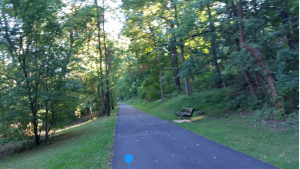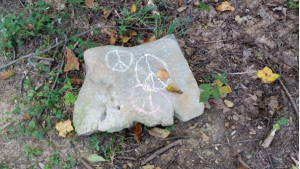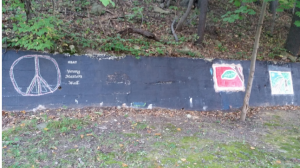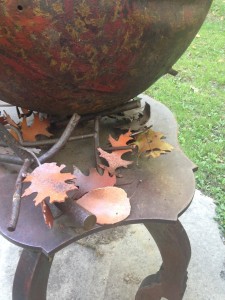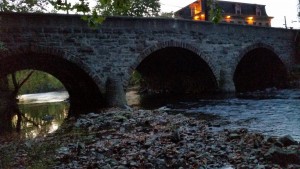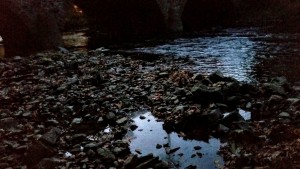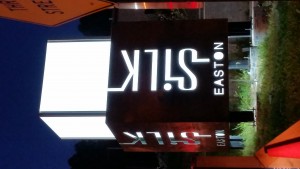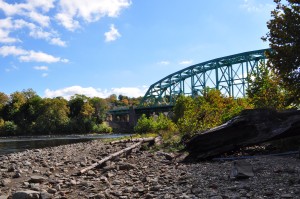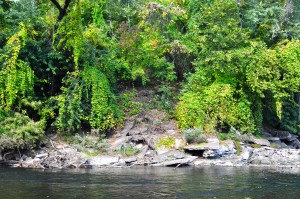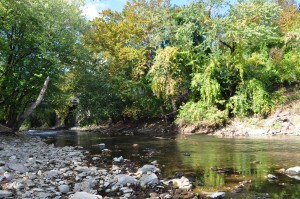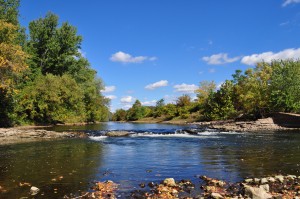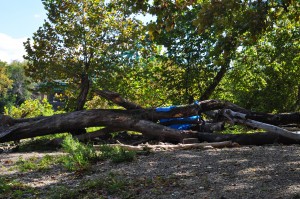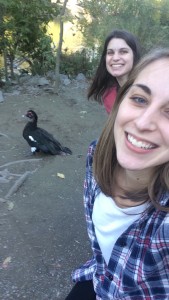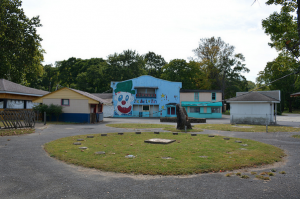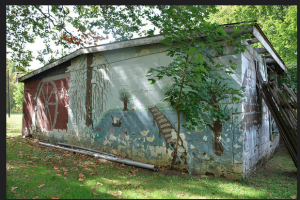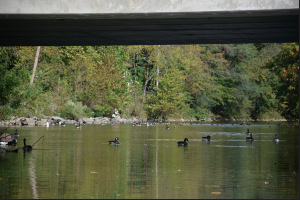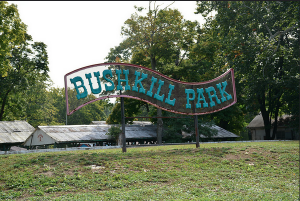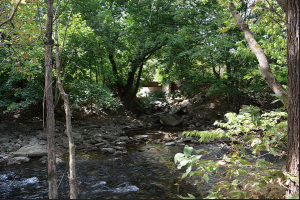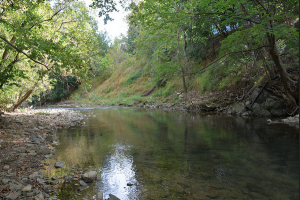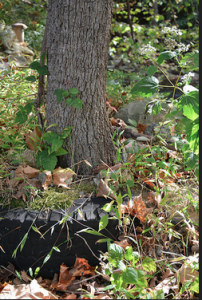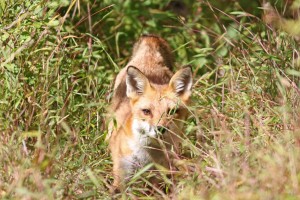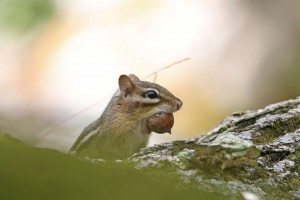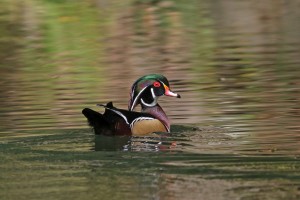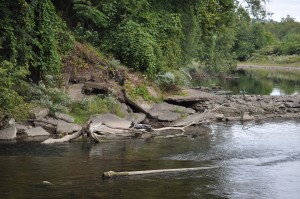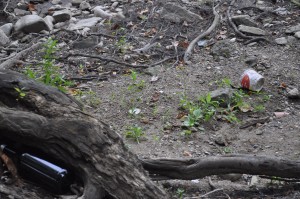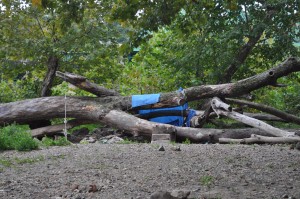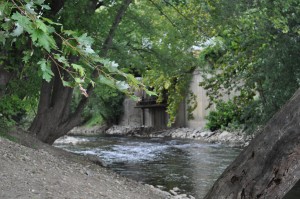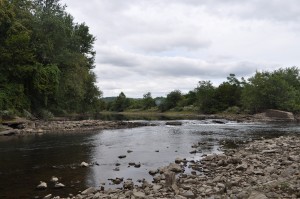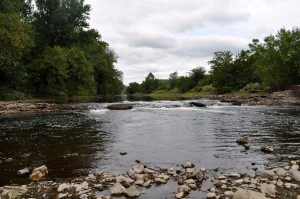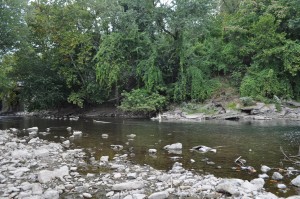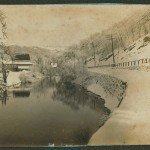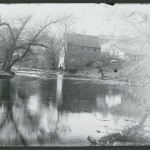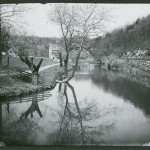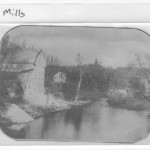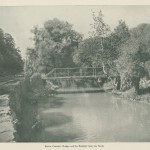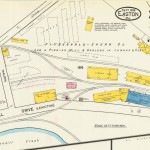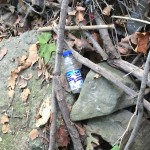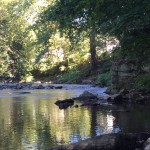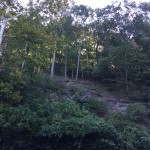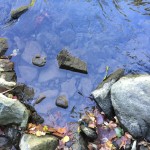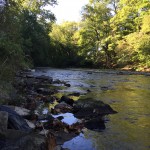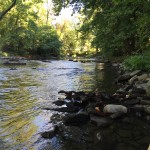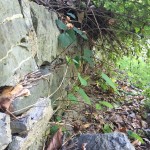By Alexa Gatti and Nicole Maksymiw
On Thursday morning, we met Professor Smith and Professor Brandes at the Arts Trail parking lot. It was 8:30 AM and there was already activity on the trail. A woman with a packet of papers was instructing two other individuals on some topic. Professor Brandes wondered if some citizen science was being conducted. We realized that interviews would be essential to find out more about the ways this site is used by the public: fishing, artistic expression, running, community events, etc.
A this time of day we also noticed the differences in light and shadow formations and reflections on the water.
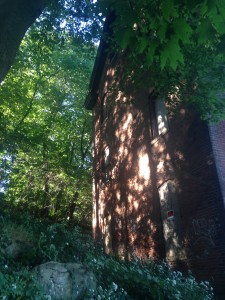
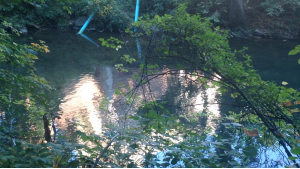
One contact that will be essential to this process is Dick McAteer, Chair of the Easton Redevelopment Authority. He will be able to provide information the development of the Arts trail, past uses of this site (including the silk mill and the railway that once ran through this area). Dick will also be able to tell us more about the future of the site as the mill is redeveloped through Project Silk. Jim Toia and Paul Dearing will be two more important contacts relating more specifically to the Arts Trail and this important aspect of the site’s development. Toia works at the arts campus at Lafayette and was an important player in the created of the Karl Stirner Arts Trail. Dearing, a local landscaper, recently won the contest to design a new piece of art for the trail that will serve to further connect trail users to the creek. It would be interesting to hear why this location is significant to each of them with their own words and perspectives.
This visit, we focused more on the connections and layers at the site. There is a balance between nature and art, which is something made by man, yet it still enhances the area. The end of the Karl Stirner Arts trail has sounds of construction at the silk mill on one side and sounds of the busy highway on the other, which drowns out the sounds of water and animals. The art along the trail presents a contrast between these built elements and the natural state of the creek and trail. Other additions to the site include words or images in chalk on pavement, rocks, and walls. These are examples of organic (or “vernacular”) art by common people who use this space regularly. We noticed a lot of chalk writing (with social and political messages) and objects left behind along the creek (For example, a row of three matching pottery pieces were left in the roots of a tree). In our video we also plan to show how activity changes throughout the day. It became apparent that we should include elements to the project that will reflect the people using the trail, so we hope to bike through the area with a camera to capture the human element here.
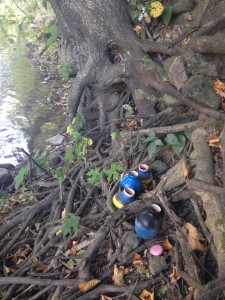
The development of layers over time has sparked our interest as an avenue to explore in our story. There are layers of art, industry, development, nature, history, and time. We hope to reflect the layers we have observed through additional various layers of images, video, and sound in our media production. The historical element incorporates how the land use has changed over time, including the trail as a former railroad track and the establishment of the mill. Some of the trees in the area might even be of similar ages to the mill. Numerous rocky outcroppings along the trail on opposite side from the water might represent these changes over time, as there is evidence of nature reclaiming old spots (such as a former dam area). There is a sense of time somewhere between the generation time that we perceive and geologic time.
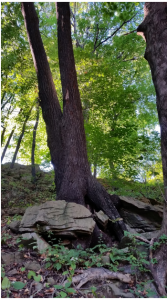
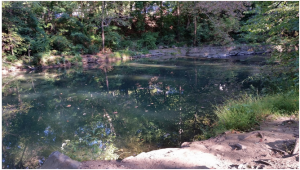
All of the elements and layers are connected in this relatively small area. Water bars drain from the highway down toward the trail and creek, connecting these distinctly different spots. An art piece that includes leaves in the sculpture had a real leaf sitting amongst the constructed ones. A tree has grown around and through rock. People use the trail regularly. New construction is bringing life back to the old mill, connecting the times. The creek purposefully runs parallel to the trail. The layers create such a rich environment.
